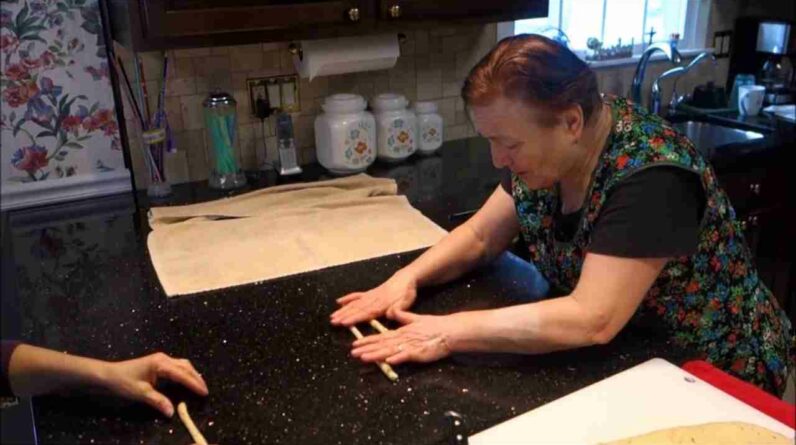In this article, we invite you to explore the delightful world of Italian tradition and Spanish cuisine. Get ready to tantalize your taste buds as we unravel the similarities between the Italian tradition of “cicchetti” and Spanish tapas. From their shared emphasis on small, flavorful bites to the social aspect of enjoying these delectable treats with friends and family, discover the intriguing connections that exist between two beloved culinary customs. So grab a glass of your favorite wine and join us on this mouthwatering journey through the culinary traditions of Italy and Spain.
Origins of Cicchetti and Tapas
Italian Origins of Cicchetti
Cicchetti, a term derived from “ciocco” which means a small piece or a pinch in Venetian dialect, originated in the vibrant city of Venice, Italy. This delectable culinary tradition dates back to the 19th century when locals would visit bacari, traditional Venetian wine bars, to enjoy a casual and sociable dining experience. These bite-sized appetizers were originally developed as snacks to accompany the locally-produced wines, offering a delightful fusion of flavors and textures. Over time, cicchetti became an integral part of Italian gastronomy, celebrated for its unique and tantalizing taste.
Spanish Origins of Tapas
Meanwhile, in the sun-drenched country of Spain, a similar culinary tradition was blossoming. Tapas, derived from the Spanish word “tapar” which means to cover, has its roots in Andalusia, a region known for its rich culinary heritage. In the past, it was common for people to place a piece of bread with toppings, such as ham or cheese, on top of their glasses of wine to prevent insects from entering. This practice then evolved into what is now known as tapas – small, savory dishes typically enjoyed with a drink. Just like cicchetti, tapas gained popularity as a delightful accompaniment to social gatherings and celebrations, embodying the essence of Spanish hospitality.
Definition of Cicchetti and Tapas
Cicchetti: Bite-sized Italian appetizers
Cicchetti are small, bite-sized appetizers that are deeply ingrained in Italian culinary culture. These delectable morsels encompass a wide variety of flavors and can range from simple and rustic to exquisite and intricate. Often served on slices of freshly baked bread or hearty polenta, cicchetti showcase the simplicity and authenticity of Italian cuisine. Whether it’s a tender slice of prosciutto, a creamy crostini topped with creamy cheeses, or a delightful seafood salad, cicchetti offer a burst of flavors in a single bite, making them an excellent choice for those looking to explore the diverse culinary landscape of Italy.
Tapas: Small Spanish dishes
Tapas, on the other hand, are small Spanish dishes that come in a multitude of flavors and textures. From the iconic patatas bravas, crispy potatoes topped with a spicy tomato sauce, to the succulent gambas al ajillo, garlic-infused prawns, tapas are a celebration of Spanish culinary expertise. Traditionally served on small plates, tapas encourage socializing and sharing among friends and family. With their diverse range of ingredients and cooking techniques, tapas reflect the rich gastronomic heritage of Spain while embodying the spirit of conviviality and enjoyment.
Cultural Significance of Cicchetti and Tapas
Socializing and Sharing Food
Both cicchetti and tapas share the cultural significance of promoting social interactions and fostering the spirit of togetherness. In Italy and Spain, mealtimes are seen as an opportunity to connect with loved ones, friends, and even strangers. By presenting small, sharable plates, cicchetti and tapas encourage diners to engage in conversation, exchange stories, and forge new connections. The relaxing and convivial atmosphere created by these small plates reflects the warm hospitality ingrained in the Italian and Spanish cultures.
Accompaniment to Drinks
Another crucial aspect of cicchetti and tapas lies in their role as accompaniments to drinks. In both Italy and Spain, it is common for people to enjoy a pre-dinner aperitivo or an evening of bar-hopping, where they can savor an array of tasty bites alongside their favorite beverages. Whether it’s a glass of Prosecco in Venice or a refreshing glass of Sangria in Barcelona, cicchetti and tapas create the perfect harmony between food and drink, enhancing the overall dining experience and encouraging a joyful celebration of flavors.
Variety of Cicchetti and Tapas
Regional Specialties
Italy’s diverse regional cuisines play a significant role in the variety of cicchetti available. From the seafood-heavy selection in coastal areas like Venice and Naples to the rich and hearty meat-focused cicchetti of Emilia-Romagna, each region brings its own unique flavors to the table. You might find creamy codfish baccalà mantecato in Venice, or delicate deep-fried zucchini blossoms stuffed with ricotta in Rome. The richness and diversity of regional specialties ensure that cicchetti lovers will never run out of new flavors to discover.
Similarly, Spain’s regional diversity shines through its tapas culture. In the southern region of Andalusia, the birthplace of tapas, you will find classic dishes like gazpacho, a refreshing tomato and vegetable soup, and salmorejo, a creamy cold soup made with tomatoes and bread. On the northeastern coast, Catalonia offers vibrant seafood tapas like the famous grilled prawns known as gambas a la plancha. The regional variations of tapas across Spain ensure that there is truly something for everyone’s palate.
Seafood Delights
Given their coastal locations, both Italy and Spain boast an abundance of fresh and delectable seafood options in their cicchetti and tapas repertoires. Whether it’s succulent marinated anchovies, lightly battered calamari rings, or steamed mussels in wine and garlic sauce, seafood takes center stage in these small plates. The taste of the sea lingers with every bite, transporting diners to the picturesque shores of the Mediterranean while celebrating the bountiful fruits of the sea.
Vegetarian Options
For those who prefer a plant-based diet, both cicchetti and tapas offer a wide array of vegetarian options. In Italy, you might find dishes like bruschetta with colorful heirloom tomatoes, creamy burrata cheese drizzled with extra virgin olive oil, or artichoke hearts marinated in herbs and lemon zest. In Spain, tapas such as patatas bravas, fried potatoes with spicy tomato sauce, or grilled vegetables with romesco sauce provide a burst of flavors and textures. The availability of vegetarian options in cicchetti and tapas ensures that everyone can partake in the pleasure of these culinary delights.
Similar Ingredients and Preparation Techniques
Use of Local and Fresh Ingredients
Both cicchetti and tapas pride themselves on utilizing local and fresh ingredients, reflecting a commitment to seasonal and sustainable cooking. Locally-sourced products take center stage in these small plates, allowing the natural flavors of the ingredients to shine through. From plump olives harvested from Italian groves to succulent Spanish tomatoes bursting with sweetness, each ingredient plays a vital role in creating the vibrant and authentic flavors that cicchetti and tapas are renowned for.
Simple Preparation Methods
The preparation methods of cicchetti and tapas are characterized by simplicity and a focus on enhancing the natural flavors of the ingredients. Whether it’s marinating, grilling, or lightly frying, these small plates require minimal cooking techniques, allowing the ingredients to speak for themselves. The art lies in the perfect balance of flavors and textures, showcasing the culinary expertise of the chefs and the quality of the ingredients. By keeping the preparation methods simple, cicchetti and tapas succeed in creating dishes that are satisfying without being overly complicated.
Small Plates Culture in Italy and Spain
Grazing and Discovering New Flavors
One of the hallmarks of both cicchetti and tapas is the culture of grazing and exploring a multitude of flavors in a single dining experience. Rather than committing to one large dish, diners have the opportunity to sample an array of small plates, embarking on a culinary adventure that leads to the discovery of new and unexpected flavors. This culture of exploration allows diners to savor a wide variety of tastes and textures, expanding their palate while celebrating the diversity of Italian and Spanish cuisines.
Promoting Conversations and Interactions
The small plates culture in Italy and Spain is not only about the food but also about creating an atmosphere that fosters conversations and interactions. Dining becomes a shared experience as everyone at the table can sample and discuss the various cicchetti or tapas on offer. It’s not uncommon to engage in friendly debates over the best combination of flavors or to excitedly recommend a beloved dish to fellow diners. This lively and interactive dining style encourages connection and camaraderie, making every meal a memorable and joyful experience.

Traditional Cicchetti and Tapas Dishes
Bruschetta
One of the quintessential cicchetti dishes is bruschetta, a simple yet delightful combination of grilled bread, ripe tomatoes, and fragrant basil. This classic Italian starter exemplifies the harmony of flavors and textures, with the crispiness of the bread contrasting with the juicy sweetness of the tomatoes. Drizzled with extra virgin olive oil and sprinkled with a touch of salt, bruschetta encapsulates the essence of Mediterranean cuisine in a single bite.
In Spain, a similar dish known as pan con tomate is a staple tapas option. Slices of rustic bread rubbed with garlic are topped with fresh tomatoes, olive oil, and sometimes a sprinkle of sea salt. The simplicity and freshness of this dish are a testament to the Spanish culinary philosophy of allowing quality ingredients to shine.
Croquettes
Croquettes are another beloved cicchetti and tapas dish, and their variations can be found across both Italian and Spanish cuisines. In Italy, crocchette di patate, potato croquettes, are a popular choice. Mashed potatoes are mixed with cheese, herbs, and often diced ham, rolled into small balls, coated in breadcrumbs, and fried until golden. The result is a crispy exterior giving way to a creamy and flavorful interior.
In Spain, croquetas are a staple tapas dish and a favorite among locals. These delightfully creamy and crispy bites are made by combining a velvety bechamel sauce with various fillings such as ham, chicken, or seafood. Once shaped into small cylinders, the croquetas are breaded and fried until golden brown, resulting in a perfect balance of textures that is sure to satisfy any palate.
Fried Calamari
Fried calamari is a delectable seafood cicchetti and tapas option that showcases the culinary prowess of both Italy and Spain. In Italy, squid rings are lightly dusted with flour, seasoned with salt and pepper, and deep-fried until golden. The result is tender squid with a delicate crispy coating. Served with a squeeze of lemon, fried calamari embodies the taste of the sea and perfectly complements a glass of Italian white wine.
In Spain, puntillitas, a type of baby squid, are often used in fried calamari tapas. These delicate morsels are seasoned with paprika, dipped in flour or batter, and quickly fried until they achieve a golden and crispy texture. Served with aioli or lemon wedges, fried calamari tapas offer a tantalizing blend of flavors and are a favorite among seafood lovers.
Pintxos
Pintxos, a type of Basque tapas, are a distinctive and flavor-packed culinary creation. These bite-sized delights are traditionally skewered or mounted onto a slice of bread. Pintxos offer a wide range of options with myriad combinations of ingredients, from the traditional Gilda, a skewer of green olives, pickled peppers, and anchovies, to more adventurous combinations like goat cheese with caramelized onions and walnuts.
Pintxos, which are commonly found in the Basque region of Spain, showcase the artistry and creativity of Spanish chefs. These miniature works of culinary art come in various forms, each providing a burst of flavors and an exploration of textures. Pintxos are typically enjoyed with a glass of wine, creating an unforgettable gastronomic experience that embodies the spirit of Spanish cuisine.
Serving Styles and Presentation
Informal Bar Culture
Both cicchetti and tapas are intrinsically linked to informal bar culture, where friends, family, and colleagues gather after a long day to relax and unwind. In Italy, bacari offer a convivial and welcoming environment where locals spill out onto the streets, enjoying cicchetti as they stand at the bar, chat with the bartender, and sip on a glass of wine. Similarly, in Spain, the hustle and bustle of tapas bars create a lively and vibrant atmosphere, drawing people in with the aromas of sizzling dishes and the clinking of glasses.
Platters and Shared Plates
Traditionally, cicchetti and tapas are presented on small plates or platters, encouraging sharing and communal dining. These shared dishes foster a sense of camaraderie and allow everyone to sample a bit of everything. It is not uncommon to see tables filled with an array of colorful and tantalizing plates, creating a vibrant mosaic of flavors and aromas. The communal aspect of cicchetti and tapas enhances the dining experience, promoting conversations, and ensuring that no one misses out on the opportunity to taste the diverse range of dishes on offer.

Modern Interpretations and Fusion
Influences from Other Cuisines
As culinary landscapes evolve, both cicchetti and tapas have embraced influences from other cuisines to create modern interpretations and fusion dishes. In Italy, you may find cicchetti inspired by Middle Eastern flavors, such as crispy falafel served with a dollop of tahini sauce. Similarly, in Spain, tapas might incorporate Asian ingredients, like tempura-style prawns with a soy-based dipping sauce. These innovative combinations demonstrate the adaptability of cicchetti and tapas, as they continue to captivate global palates and cater to diverse culinary preferences.
Creative Combinations
With the rise of avant-garde cuisine, chefs in both Italy and Spain have pushed the boundaries of cicchetti and tapas, creating inventive and unexpected flavor combinations. It is not uncommon to find cicchetti topped with unexpected ingredients like truffle shavings or balsamic reduction. In Spain, tapas might feature surprising pairings such as foie gras with fig compote or grilled octopus with paprika-infused olive oil. These imaginative interpretations showcase the ingenuity and creativity of Italian and Spanish chefs, ensuring that cicchetti and tapas remain exciting and innovative culinary experiences.
International Popularity and Spread
Cicchetti and Tapas beyond Italy and Spain
The popularity of cicchetti and tapas has transcended their countries of origin and spread across the globe. Today, one can find restaurants and bars specializing in these small plates in various corners of the world, from bustling metropolises to quaint towns. Their international appeal lies in their ability to offer a diverse and fulfilling dining experience that caters to different tastes and preferences. Cicchetti and tapas have become ambassadors of Italian and Spanish cuisine, allowing food enthusiasts to taste the rich flavors and cultural heritage these countries have to offer.
Influence on Global Food Culture
The global popularity of cicchetti and tapas extends beyond their presence in restaurants. These culinary traditions have left a lasting impact on the way people approach food, whether it’s in the form of small plates or the appreciation for communal dining. The concept of sharing and savoring a meal together has become deeply ingrained in modern food culture, influenced by the conviviality and joyous spirit of cicchetti and tapas. As cultures intermingle and food experiences become increasingly diverse, cicchetti and tapas serve as a reminder of the power of cuisine to bring people together and create lasting memories.
In conclusion, the Italian tradition of cicchetti and Spanish tapas share common origins, cultural significance, and culinary techniques. Both Italian and Spanish cuisines embrace the concept of small plates, promoting socialization, exploration of flavors, and sharing of food. With their wide variety of regional specialties, seafood delights, and vegetarian options, cicchetti and tapas captivate the palates of food enthusiasts around the world. As these culinary traditions continue to evolve, their impact on global food culture remains profound, testament to the enduring charm and enduring influence of cicchetti and tapas.










